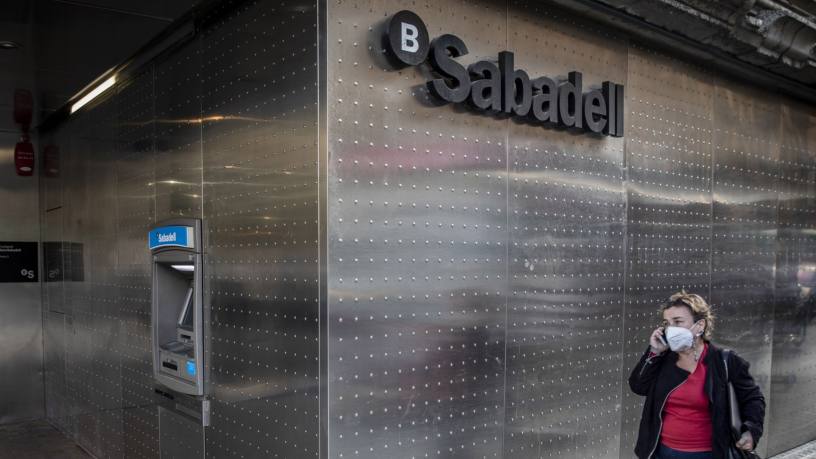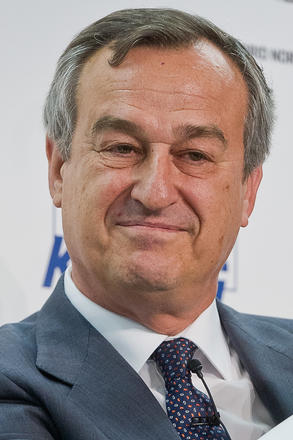For Spain’s Banco de Sabadell, the Covid-19 pandemic has meant pause for thought. Despite maintaining fourth position in the The Banker's Spanish bank ranking in terms of assets, the Catalonia-based lender decided to carry out a management shake-up in March 2021. The highlight of the executive board reorganisation was the appointment of César González-Bueno, who brought digital banking to Spain, as the bank’s new CEO.
José María Roldán, chairman of the Spanish Banking Association (AEB), considers digital technology a crucial business segment in an environment of declining interest rates and squeezed margins. “It is the key to reducing costs and recovering acceptable profitability levels,” he says. This opinion is echoed by the market, which hailed the arrival of Mr González-Bueno as one of the best-placed bankers in Spain to expand and accelerate Sabadell’s digital operations. “The onboarding of Mr González-Bueno as the new CEO should contribute to Sabadell’s digital strategy in the retail business, benefiting from his previous experience in this field at ING Direct Spain,” says Fernando Sánchez, associate director at Fitch Ratings.
The aim will be to consolidate our position and increase business volume efficiently, while maintaining profitability
Mr González-Bueno launched ING Direct Spain in 1998. Today it is Spain’s leading digital bank. During his tenure, Mr González-Bueno was appointed to the global management team of ING Direct NV, adding the UK, Italian and French businesses to his remit. He was later made ING Bank’s head of Europe and became a member of its bank management team, with responsibility for 17 countries. “The truth is, the launch of ING Direct in Spain stirred up a certain amount of concern among Spanish bankers, who had not been prepared for the successful take-off of a digital banking enterprise,” says one analyst, who wished to remain anonymous.
Fully digitised
It came as no surprise that one of the basic pillars of Sabadell’s three-year strategic plan, announced in May 2021, is to reinforce and extend the bank’s digital operations. The bank’s strategic priorities for 2021 include refocusing its efforts on building the domestic market, along with strengthening the retail business and its core small and medium-sized enterprise (SME) operations.
“We aim to achieve an in-depth transformation of our retail banking strategy, with a fully digitised business model for consumer loans, payment services and current accounts,” says Mr González-Bueno. “On the other hand, the marketing of mortgages, savings, investment products and insurance will be based on a mixed model of distribution through remote channels, with tailored support from branch-based specialised managers.”
Elena Iparraguirre, director of financial institutions at Standard & Poor’s, says: “In the past, the banks could achieve significant earnings streams from holding deposits, but this is no longer the case. Sabadell’s business growth, as it now stands, is not going to compensate for low rates. It needs to adjust its expenses base, which entails reducing staff and branches and boosting its digital business.”
In outlining the 2021-2023 strategic plan, Mr González-Bueno placed emphasis on what he considered to be the bank’s position of strength and leadership in the business banking segment in Spain, where it has 40% market penetration. “The aim will be to consolidate our position and increase business volume efficiently, while maintaining a high level of profitability,” he says. “This will be achieved by focusing on the branch network, providing solutions and accompanying the internationalisation of Spanish companies and by drawing on ongoing vertical specialisation programme by sector. It will also build on the capabilities of the corporate banking unit to provide specialist solutions for SMEs and will take advantage of opportunities stemming from the credit multiplier effect which will arise from the Next Generation EU project.”
Failed merger
The SME business, in which Sabadell enjoys a solid domestic share, has traditionally represented one of the bank’s underlying strengths. This is believed to be what prompted BBVA to initiate merger talks with Sabadell in November 2020. The second-largest Spanish bank took an interest in Sabadell’s SME business, which would have complemented BBVA’s franchise and underscored the merged group's position as one of Spain's leading lenders. The talks collapsed when the two banks failed to reach an agreement on price. The AEB’s Mr Roldán says there does not appear to be near-term merger activity on the horizon among Spanish banks. “I think there are some, albeit fewer, opportunities for mergers in the sector than was the case in the past,” he says. “This is more likely to take the shape of cross-border rather than domestic deals.”
A major challenge facing Mr González-Bueno and the bank’s new chief finance officer, Leopoldo Alvear, is improving return on tangible equity (ROTE), a key measure of a bank’s profitability, to a level comparable to those of its peers. The target is to achieve a ROTE above 6% by the end of 2023, compared with its current level of 1.25%. By comparison, CaixaBank’s ROTE stood at 8% in the first quarter of 2021. In unveiling its plan, Sabadell did not give a specific profit estimate for 2023. However, the market consensus is for the ROTE target to translate into a net profit that year of between €625m and €670m, compared with just €2m in 2020.
Ms Iparraguirre considers Sabadell’s new business plan “a sensible one”, in that it refocuses the bank on its fundamental strength, which is the Spanish market, while reducing the allocation of capital to international markets. “The expected returns outlined in the plan are achievable, if not outstanding,” she says. “The strategic plan is not going to yield immediate results and Sabadell needs to tackle its profitability problem. The bank operates in a negative interest rate environment, though in this it is not unique among Spanish banks. In the past, the banks could achieve significant earnings streams from holding deposits, but this is no longer the case.”
The TSB question
There is still a question mark over Sabadell’s attempts to secure a long-term future for its UK subsidiary TSB, which it acquired six years ago for £1.7bn. The deal was struck at a time when the UK market, pre-Brexit and Covid-19, was showing strong growth prospects. But instead of adding to the parent bank’s profitability, as was anticipated, TSB reported losses for a number of years. “Sabadell aimed to position TSB as a challenger bank. However, the failure in the migration of its IT systems mitigated against this,” says Ms Iparraguirre. “Sabadell’s previous management team took the decision to shrink TSB’s operating infrastructure in terms of branches and staff levels, something that has now been completed.”
There was a good deal of market speculation last year about Sabadell seeking to offload TSB as an irreversible loss-maker. Sabadell’s previous management team passed on the message that they were willing to seek a buyer for TSB as early as 2021. However, the outlook has turned more positive, and while Sabadell might not be considered the natural owner of the UK bank, analysts do not expect a ‘for sale’ sign to be hung on TSB in the near term.
“The UK subsidiary has been a drain on the group’s profitability in the past few years but this is now changing, with TSB reporting a profit in the first quarter of 2021 and with better earnings prospects for the next two years,” says Cristina Torrella, senior director and head of Spanish banks at Fitch Ratings. “The improved performance will be supported largely by cost savings, as well as loan growth prospects.”
Sabadell’s strategic plan includes TSB as an integrated part of the group. The parent bank intends to leverage TSB to achieve overall growth and profitability targets, partly based on the improved economic outlook in the UK. “This does not mean that in the longer term Sabadell may not be open again to analyse offers if these are attractive enough, especially after achieving a turnaround in TSB’s business this year, thanks to an improvement in business dynamics and an ambitious restructuring plan,” says Fitch’s Mr Sánchez. “The impact of the restructuring plan should be fully visible in 2022 and will support profitability throughout the life of the programme.”
Sabadell is pinning its hopes on TSB achieving market-beating growth in UK mortgage lending, a low-profit-margin but likewise a low-risk business.













